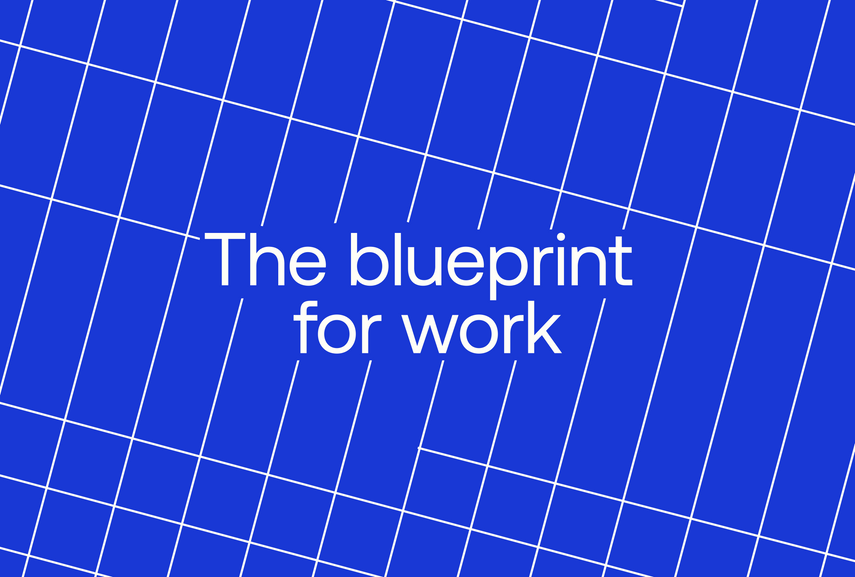
Because I have a background in architecture, I spend a lot of time thinking about how people use space. When I was designing the Mahindra Research Valley in Chennai with Charles Correa, we thought a lot about how simplicity and modernity impact the workplace.
Today, millions of us are adapting to unfamiliar spaces in an entirely new world of work. Our tools, information, schedules, meetings, goals, and everything else we do day-to-day in the workplace oppose this idea of simplicity. Our workplace today looks more like congested, poorly planned cities than intentionally built structures that are made to withstand the test of time.
If we look to architecture, we can learn how to shape our digital workspaces more intentionally so that we can use them in a sustainable way that allows us to reach our collective potential.
At present, work isn’t sustainable
In the past 10-20 years, we’ve imposed the scale of the internet on a human way of working that’s evolved slowly over centuries. We’ve entered a digital era where work could be done at any time by any number of colleagues in any number of locations across any tool.
The seemingly infinite number of possibilities is resulting in a chaotic workplace that’s eating our highly finite attention. And the blistering pace of the internet and its scale is outpacing the evolution of the typical human worker. This phenomenon is known as the exponential gap, according to Azeem Azhar.
Our attention, our focus, is a resource. It’s the fuel for the knowledge economy. It’s also a hugely limited resource and shifts greatly between settings or situations. For guidance on how to best protect work’s greatest resource, we can look to architecture’s role in orchestrating how humans use land sustainably.
Do we let urban developers build whatever they want, wherever they want? Absolutely not. In addition to zoning restrictions and land use constraints, there are numerous legislations and industrial zones that prevent that exact scenario from happening.
Our most successful, most diverse cities benefit from intentional design that creates green spaces for people to look after themselves, has great infrastructure to help people get from A to B, and has access to things like health care, education, and affordable housing.
Unfettered development without thoughtful design causes problems. Congestion. Inequality in the form of clusters of poverty and wealth. Pollution. Green spaces come under threat. It’s highly fragmented -- there’s nothing to bring balance and structure.
To illustrate this, we can take Mumbai as an example. The renowned Indian architect Charles Correa called it a “great city, terrible place.”
Why? Land isn’t particularly well managed. Mumbai’s residents spend 11 days in traffic per year commuting. The trains are overcrowded. The sanitation is poor. There’s a lot of chaos to the city and its organization, or lack of it.
Cities with a clear blueprint and land use constraints aren’t always perfect, but they help to organize the surroundings with context and structure.
For example, let’s look at Chandigarh. It’s a mecca for architecture lovers with plenty of green space. Its orderly grid system appears almost fantastical. There are provisions for green spaces, with plenty of parks and tree-lined avenues. It’s #1 in India on the HDI scale and ranks as one of India’s cleanest cities.
The difference between Mumbai and Chandigarh is that one was built to a blueprint and the other wasn’t. This brings structure and balance to life and economic activity at scale, managing the scarcity of land in a sustainable fashion.
Out of Mumbai and Chandigarh, what looks more like the state of work today? You guessed it. Our chaotic workplace is more akin to Mumbai.
The situation at work is a tragedy of the commons
What we’re seeing is a tragedy of the commons in the modern workplace.
The tragedy of the commons is an idea coined by ecologist Garrett Hardin in 1968. It’s where common resources get despoiled because of people prioritizing their own needs over the collective.
It plays out in cities in the form of congestion, overcrowding, and pollution. It plays out in our seas in the form of overfishing. It even plays out on social media in the form of fake news.
And it’s happening at work. It’s congested. It’s hard to navigate. It’s noisy.
We need a new blueprint
Like Chandigarh benefitted from a master plan, we also need a blueprint for this new world of work. Currently, we’re in the digital ether with a limitless number of colleagues spread over all kinds of locations and working with a seemingly infinite number of tools on intangible products.
We’re lacking trust, structure, and access - which don’t come easily at this scale.
This is the existential gap in modern work. Technology has advanced at an exponential rate, but our ways of working have adapted much more slowly. We’ve been trapped by legacy norms. We can close this gap with a blueprint for work designed around the pillars of trust, structure and access.
The pillars of scale:
- Structure. Just like successful cities provide the infrastructure to help people get from A to B, successful workplaces put all the relevant stuff at people’s fingertips. Status updates and pings are the traffic jams of the modern workplace, and it doesn’t have to be like that.
- Access. Just like successful cities prioritize equal access to healthcare and education, successful workplaces should make it easy to find new professional opportunities. You shouldn't have to be part of the in-office clique or rub shoulders with executives to get chosen for special projects. There should be a way for you to break through silos and walk the halls of the virtual office and choose where you make an impact.
- Trust. The most successful workplaces give employees the freedom to work on their own terms without the rigidity of the 9-5 or micro-management. They take the work and run with it, just like citizens take a city design and trust that they will be able to get where they need to go without hand-holding from the people that designed it.
At Qatalog, we’re productizing these pillars of scale to help companies scale fast and sustainably. It’s the blueprint for a sustainable megalopolis, not an overcrowded apartment block. By doing this, we hope to create order out of chaos in the new world of work.
